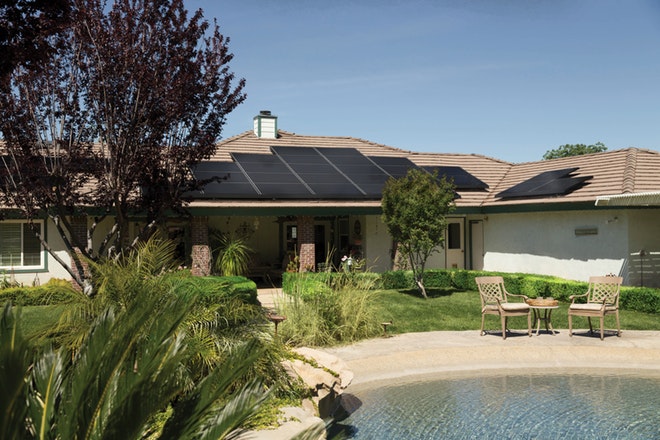When it comes to choosing bedding for our bedrooms, we often find ourselves at a crossroads between two popular options: comforter vs duvet. They both have their specific qualities and provide different degrees of coziness, heat, and chic.
In this discussion, we will discuss the key features of duvets and comforters, although with an aim to help you in making the right decision between a duvet or a comforter. It will also provide the tricks on using the comforters and the duvets, common myths busted and when to use one than the other.
What is a Comforter?
Comforters are categorized as thick and luxurious bed accessories made of a pile of insulating filling material usually synthetic fiber or down feathers or polyester. Filled materials vary from polyester fiberfill, down or a combination or both, which is used to offer warmth and support when asleep. Holding the filling in place it also has an outer layer which impacts the appearance of the bedding set.
Key Features of Comforters
There are diverse characteristics to this comforter, they are durable, can easily be cleaned and are very versatile. They are easy to wash and bit not easily fade, tear or stressed by frequent use making them ideal for large families. They are also available in many sizes, including twin size, full size, queen size and California king size so that they will fit any bed.
Pros of Comforters
- The outer covers of comforters are usually very strong and thus prevent any serious wear while the comforters are very easy to wash being machine washable.
- They come in different sizes and thus can easily fit any bed because of this feature of its design.
- They maintain uniform comfort to give warmth support making it possible to use it in different climatic conditions and sleeping habits.
- Comforters are not too expensive and can be purchased anywhere in a range of various designs and prints.
Cons of Comforters
- Even some comforters which are made of down feathers may not be ideal for people with allergies because such fabric is usually hard to wash.
- Blankets might be problematic because they can be warmers and sometimes you find that it is too hot at night.
- They may be a touch denser than the duvets and, as such, may be not so good to use in warm climate conditions.
What is a Duvet?
A duvet is a special type of bedding that was originally from Europe and that is now used to a greater extent in North America. A duvet is an insulated and comfortable material that once put over a bed, would be covered over with a duvet cover. This is made of a broad range of materials including down feathers, artificial fibers, or a combination of both, and is intended to be inserted into a cover which may be removed for washing.
Key Features of Duvets
Both duvet covers and duvets are light materials, especially popular for their softness and the property of shifting between different sleeper comfort zones. They can be easily further enhanced additionally by adding, for instance, extra insulative layers in between, to reach the targeted level of warmth and support. It is much the same as bed pillows in the sense that they also have different sizes and fill, enabling users to find the durable duvet that they want.
Pros of Duvets
- These are very light and flow quite simply such that it considered to be used in areas with hot climate.
- It turns out they can regulate the amount of filler material, so the users can get the desired level of warmth and support.
- They also use duvet covers and they are removable and easy to wash, to care for the bedding.
- Duvets are available in numerous options regarding size, design, and color, meaning that customers have the ability to select from numerous choices of styles when selecting their duvet.
Cons of Duvets
- Duvets have an outer cover which is used to contain the filling and a way of keeping the duvet clean.
- They can also be costlier than comforters depending on the fill material and specifically the brand that a particular set belongs to.
- Comforter covers may be subject to more repeated laundering than duvet covers because they are vulnerable to degradation.
Comforter vs. Duvet: A Side-by-Side Comparison
But beyond that, both can be like comforters and duvets, both can help you have a good sleep, but there are some differences.
- Comforters are usually denser, warmer, and more long-lasting than a quilt; optimum for colder areas or those who desire a little ‘weightier’ cover.
- Duvet covers tend to be thinner, less bulky, and adjustable, making for good hot climate bedding as well as a product that will please buyers who would like more variety in their bedding.
Let’s break down the key differences between comforters and duvets across several important factors.
| Feature | Comforter | Duvet |
|---|---|---|
| Design | Quilted blanket with decorative exterior | Insert with removable cover |
| Maintenance | Entire piece needs washing | Only the cover needs frequent washing |
| Style Options | Limited to pre-made designs | Endless options with interchangeable covers |
| Ease of Use | Ready to use out of the box | Requires assembly of insert and cover |
| Cost | More budget-friendly | Higher initial cost but long-lasting |
Factors to Consider When Choosing Between Comforters and Duvets
Comforters and duvets are two products that give warmth and help you feel comfortable in Your bedroom oasis. However, there are things you need to consider as guidelines before finally picking your favorite type of bedding for the room you plan to install in it.
1. Maintenance Preferences
Comforters and duvets require a similar amount of care but depending on the kind of device; the individual will choose depending on the extent of,” I will clean the bedding device.” Blankets are easier to wash since comforters usually have to be hand-washed, or better yet, dry-cleaned. Duvets are intended to be washed in a washing machine, they do not need too much care, so it’s recommended to those who want to have simple bedding.
2. Aesthetic Flexibility
An attraction to the bedroom plays a crucial factor in selection of comforter or duvet, there are other factors to consider after all. Comforters are simple bedding that give the room a traditional touch, and it is also easy to add multiple covers such as coverlets or shams or duvet covers. Duvets are simple in design and are decorative and their design can be easily changed by merely changing the duvet covers.
3. Climate and Seasonality
Comforters and duvets also have certain differences, which are imperatively important considering climate and seasons. A comforter is a soft warm bed for use in cold climates or winter is usually stuffed with down or synthetic material. Duvets too come in different fills, and therefore one can be able to get the right fill that best suits their climate. If you live in a mild climate or won’t be using the blanket as often to heat up or cool down during warmer or colder months then a duvet is the best choice.
4. Budget Constraints
Price affects the decision or whether to opt for a comforter or a duvet. Comforters are usually cheaper initially because they have the filler and the outer covering most of the time. While blankets need only the blanket, on the other hand, duvets are good with the insert and the cover. Therefore, there will be high initial costs. Another way around this is to purchase a superior quality washing inner shell along with a duvet insert that will come in handier as you can use it for unique styles, and it will also prove to be more economical in the long run.
5. Cleaning and Care
Washing and care should be the last criteria that should be used in the choice between comforters and duvets. Comforters have to be washed with a dry-cleaning method, which may not be very cheap and very easy whenever you desire to clean them. In contrast, Duvets have an affordable appearance and can be washed easily because they are machine washable. Therefore, the care depends only on the willingness and attention of the owners. However, duvet covering is more convenient than separate blankets.
Tips for Using Comforters and Duvets
For Comforters
- Use a top sheet to reduce the frequency of washing.
- Opt for lightweight comforters if you tend to overheat at night.
- Invest in a duvet cover for your comforter if you want added protection and design flexibility.
For Duvets
- Look for duvet covers with corner ties or buttons to secure the insert in place.
- Choose natural fibers like cotton or linen for breathable duvet covers.
- Consider purchasing multiple covers to change your bedroom decor with the seasons or your mood.
Common Misconceptions About Comforters and Duvets
- Comforters Are Always Warmer Than Duvets
While comforters are designed to provide warmth, duvets can be equally effective, especially when paired with the right insert for your climate.
- Duvets Are More Difficult to Use
Though assembling a duvet might seem daunting at first, it becomes easier with practice. Using duvet covers with zippers and securing ties simplifies the process.
- Comforters Don’t Need Covers
While not essential, adding a cover to your comforter can prolong its lifespan and reduce washing frequency.
When to Choose a Comforter
Choose a comforter if you:
- Prefer a bedding option that’s ready to use right away.
- Are looking for a budget-friendly solution.
- Don’t plan to change your bedroom decor frequently.
When to Choose a Duvet
Choose a duvet if you:
- Want maximum versatility in style and design.
- Prefer a more manageable cleaning routine.
- Need an adaptable bedding solution for seasonal changes.
Conclusion
It can be observed, however, that the comforter and duvet are both kinds of bed cloths that offer the major element of temperature and influence how your bedroom appears to you. Although both the products can function as insulators, providing some stylish element into the bedroom, they differ in terms of material, method, and style.
Comforters are stuffed with synthetic fibers and/or down and are normally protected by a single layer of washable cover. In contrast, the duvets are insulated with down or artificial filling and are most often inserted in a detachable, and frequently, waterproof protection. In general, the decision of whether to use a comforter or a duvet will vary based on a person’s preferences, activity levels and the climate.
There are lots of similarities, but also differences that often make it hard to feel comfortable with choosing between a comforter and a duvet. Nevertheless, knowing some of the factors that define their differences will assist you to make the right decision for your sleeping habits. They all have their pluses and minuses and both ways can noticeably advance your solace and give sufficient warmth and insulation.
Finally, the choice whether we go with a speeder or a duvet depends on the user’s preference, time, and effort that one is ready to spend keeping the product as well as the need of the individual person. Whichever direction you decide to take, the key message for everyone is to always put your own needs, health, and cleanliness first.
FAQs About Comforters and Duvets
Can I use a duvet cover on a comforter?
Yes, you can! Comforters are used alone, but a duvet cover gives more protection and numerous choices regarding color and print.
Which is better for hot sleepers: a comforter or a duvet?
Duvets may be better for hot sleepers because lightweight fillings and fabrics for their covers can maintain temperature.
How often should I wash my duvet or comforter?
For comforters clean them every three to six months to ensure they are clean based on their usage. Duvet covers should be washed more frequently, within in 1-2 weeks, while the inserts should be washed within the next 3-6 months.
Do I need to use a top sheet with a duvet?
Not necessarily. In Europe, many people skip the top sheet when using a duvet since the cover serves a similar purpose.
Are duvets more expensive than comforters?
Duvets often have a higher upfront cost due to the need for a cover and insert, but they can be more economical over time.
What’s the best filling for comforters and duvets?
Down and down alternatives are popular fillings for both comforters and duvets. Down offers superior warmth and softness, while down alternatives are hypoallergenic and easier to maintain.






